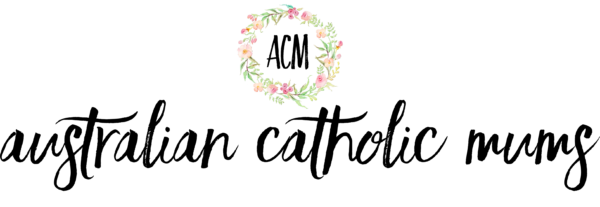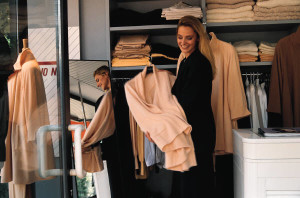‘If you’ve got it, flaunt it’ has become the inevitable catch-cry when it comes to female fashion.
A big busted girl is encouraged to wear low-cut tops that accentuate this feature; a girl with slim, shapely legs is encouraged to wear mini-skirts and hot pants. Makes sense right? Certainly there are a legion of women and teenagers who believe this is to be the case, thanks in part to recording artists such as Destiny’s Child who promoted the concept of ‘jelly’ – otherwise known as the parts of our body we personally feel happy about – in their song ‘Bootylicious’.
But when it comes to fashion and our own individual style, where do we want people to be looking?
Fashion as art
Art students learn that in any piece of work, no matter the medium, there is one major focal point, and other secondary or subsequent focal points. That is, when we look at a painting, for instance, are eyes are drawn through the composition of elements in the picture to one specific point. The smile of the Leonardo Da Vinci painting ‘Mona Lisa’ is one such example.
When we dress, whether we realise it or not, we too create an image, a composition of clothing and accessories. And we are visual people.
Numerous studies have been conducted over the years as to how we form impressions of people. If our impression were to be divided up: 55% is based on appearance and actions, 38% on tone of voice and a mere 7% on what we actually say during that first introduction.
So whilst the old adage ‘presentation is nine tenths of the law’ it’s not really that far from the truth. And that poses a serious question, what does your appearance say about you?
Finding your focal point
Clara* was a school peer of mine who had a very large bust size. Most often when meeting people, regardless of gender, she would later complain that they hardly looked at her face and were too busy looking at her breasts.
Clara was a very intelligent and confident girl and lived by the mantra ‘If you’ve got it, flaunt it’ and invariably dressed in such a way that emphasized her large bosom. Her school blouses were always unbuttoned enough to show cleavage and she often wore dark coloured bras under our pale yellow school blouses. On mufti days her shirts were always low cut and revealing.
Unfortunately, upon first meeting Clara, she was almost always judged to be fairly forward and sexually aware, despite that not being the case. Her appearance led people to believe that she knew she had power over men and was somewhat of a jezebel. She was seen only for her body parts.
In effect, Clara was dressing so as to draw attention to her breasts – they were the focal point – whether she realized it or not. By dressing so as to minimize the size of her breasts, or draw attention away from them, Clara could have saved herself a lot anxiety and frustration at being seen only as a ‘set of boobs’ as she felt she had become.
This may just be the right time to go and find a full length mirror and scrutinize the way that you are dressing. Where is your focal point? If you’re not sure, ask a couple of good friends or family members to give their opinion.
Re-position your focal point
If fashion is not aimed at flaunting our ‘jelly’ than what is it trying to achieve? Where should our focal point really be?
If you answered anywhere other than eyes, then you’re on the wrong track.
Much has been said about our ‘eyes being the window to our souls’ and its absolutely true. In our Western culture we desire people to look us in the eyes when they talk otherwise we assume that they are not interested or worse, not paying attention.
Therefore, if our fashion is drawing the eyes away from our face, then we need to adjust our fashion so that we don’t having competing focal points.
If we look back our body types – heart, pear, box and hourglass – we discussed that we should be trying to create balance in our silhouette. Basically that is because if we don’t, a particular area of our body will become the focal point, drawing attention away from our eyes. For instance, a heart shape draws attention to the chest and pear shapes to hips and bottoms.
So then, when we contemplate the way we dress and our focal points, we need to do so with our individual body types in mind.
PEAR
Focal point: hips, thighs and bottom
Avoid: Tight fitting bottoms of any kind as well as flared trousers. This rules out both skinny and bootleg jeans. Patterns and bright colours on your bottom half. Vertical and diagonal lines on your top half and horizontal lines on your bottom half.
Wear: Layers on top! Vests, shrugs, shawls and ponchos are all great for adding balance to your top and will help with overall proportion. Shiny fabrics, detailed designs, patterns and straight (pencil) skirts suit your shape best. Dark coloured bottoms are a must.
HEART
Focal point: chest and shoulders
Avoid: Showing any cleavage!! Prints, plaids and horizontal lines on top. Large pockets on top, spaghetti straps. Layers on top – shrugs and bulky jackets will only make you look bigger on top. Tapered or very tight trousers like skinny jeans and leggings will only make your top half look heavier.
Wear: Fitted tops with vertical lines. V-neck shirts, wraps and fitted blouses. Bootleg or straight leg trousers, baggy styles and fuller style skirts to balance out bottom half. Dark coloured tops are a must – use colour and texture on your bottom half.
BOX
Focal point: waist
Avoid: Exaggerating your natural proportions. Too many horizontal lines and very busy patterns. This includes belts and clothing with large, bold or bright patterns. Exaggerated styles and tops that are ill fitting and make you look wide. Wide-leg pants and over size t-shirts. Frills and ruffles any where near your waist or hips. Hipster jeans. Thongs or other similar flat footwear.
Wear: Fitted tops and blouses. Full, flared and tapered trousers with a natural waist. Monochromatic colours (similar shades). Frills and ruffles on sleeves or skirts. Soft patterns.
HOURGLASS
Focal point: waist
Avoid: Horizontal lines around your waist – especially belts! Bulky jackets and sweaters and any style that ends near your waist. Tapered leg trousers and hipster jeans. Any style that places detail or patterns around your waist.
Wear: Wrap tops, fitted knits, fitted blouses and any styles that fall below your waist. Tops that nip in under your bosom and then fall softly past your waist. Flared, full or straight leg trousers and pants with a natural waist. Fitted jackets and the traditional suit are a good look for you. Monochromatic colours (similar shades).
Originally posted 2014-02-06 03:27:18.

